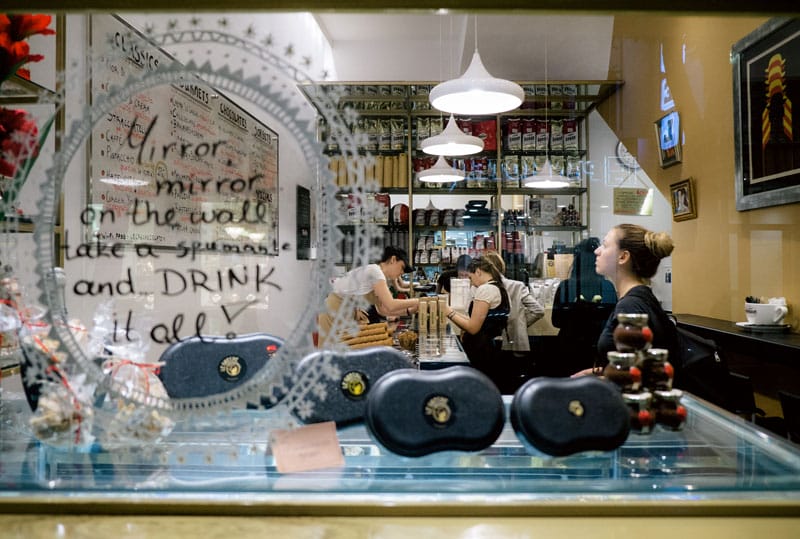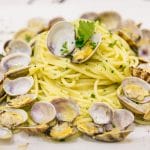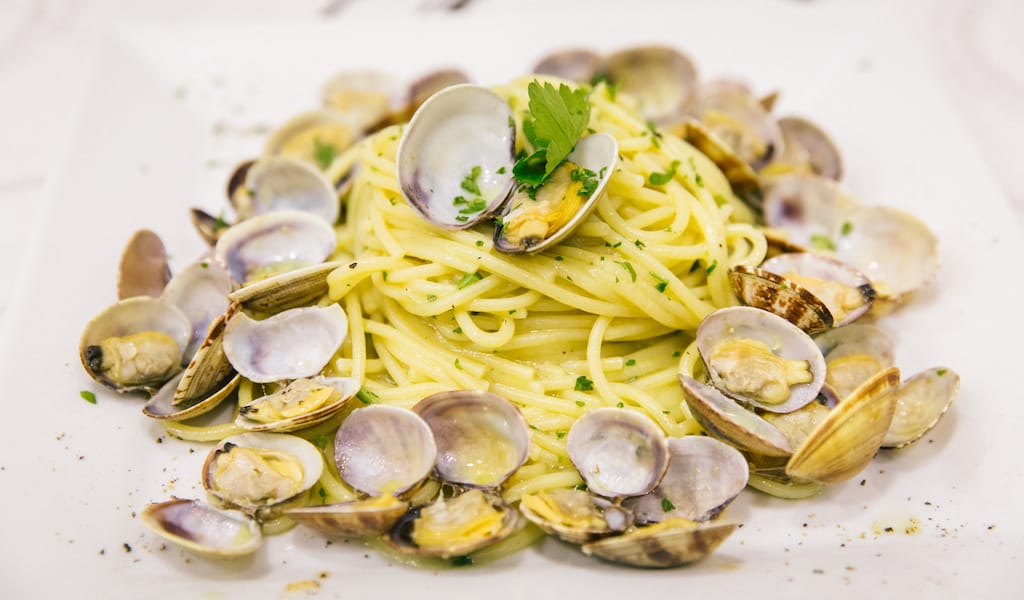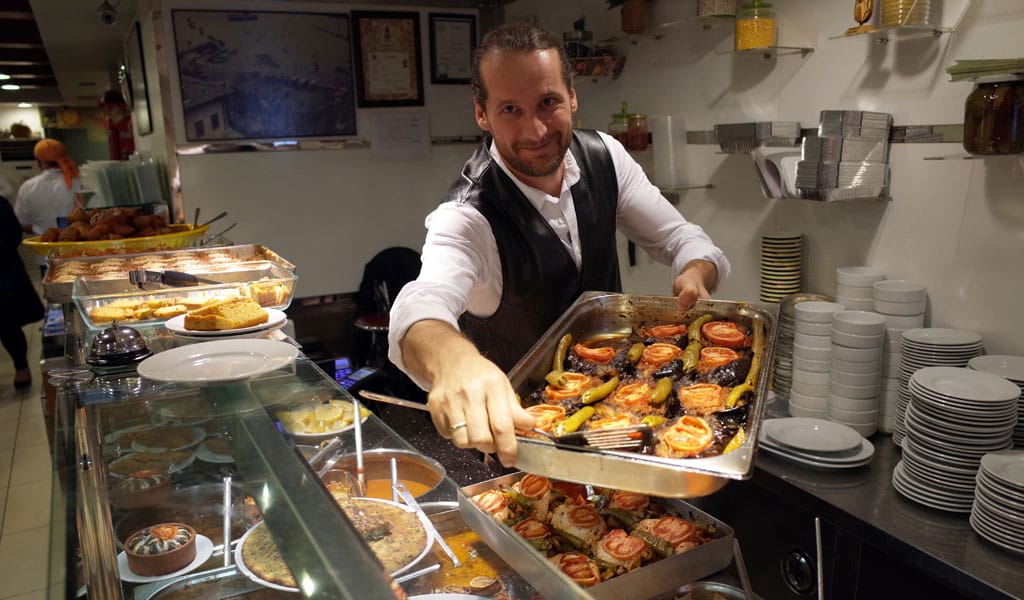Evi Papadopoulou is no stranger to the culinary arts. A well-regarded food journalist who has written articles on pastries and desserts in the top Greek gastronomy publications, she is also a classically trained chef. She studied at the culinary school of renowned Italian pastry chef Iginio Massari and followed that up with specialized training in making artisanal gelato at Francesco Palmieri’s prestigious laboratory in Puglia, Italy.
In July of 2014, Papadopoulou opened Le Greche, a gelato parlor tucked away on Mitropoleos Street, right off Syntagma Square. The parlor itself is straight out of an Alphonse Mucha painting and has an Art Nouveau feel, with its airy, muted color palette. Since it opened, the shop has accumulated quite a cult following – and for good reason.

These days, most “artisanal gelato” is generally prepared using ready-made industrial powder mixes that contain artificial coloring, flavors, margarine, preservatives and other additives to enhance flavor, improve structure and prolong shelf life. However, at Le Greche the philosophy is quite the opposite: Papadopoulou is committed to using quality, fresh, all-natural products and impeccably sourced ingredients from Greece and Italy. Only the best products make it through the doors of her laboratory, and then they are put through a series of blind taste tests to determine the best flavor combinations and uses. She makes her gelato from scratch according to classic Italian recipes. The rest of their process is top secret and uniquely Le Greche’s own. The proof is in the final product, which is a velvety-textured, well-balanced and flavorful gelato.
Those carefully sourced ingredients, of course, play a starring role. The ricotta comes from Crete, dried figs from Kalamata, raisins from Corinth, honey from the Cyclades, fresh milk and strained Greek yogurt from local farms, eggs from Megara, sour cherries from Macedonia, lemons and melons from Argos, oranges from Laconia and sweet wines from the islands of Lemnos and Santorini.
We recently stopped by and indulged in several of Le Greche’s quintessential Greek gelato flavors. For a more minimal and simplistic touch, the Greek yogurt with raisins from Corinth is an ideal option, with its delicate, refreshing tang. Corinth is a region that is famous for its intensely flavored petite raisins, and it has been producing this specialty dried fruit since the 4th century B.C. The fig and mascarpone gelato is one of the most popular among locals; the dried, caramelized figs come from Kalamata, a region known (to Greeks at least) for having the most delicious figs in the world.

For cocktail lovers, the lemon-mint sorbet is a revitalizing and zesty palate-cleanser that tastes exactly like a mojito. The fruity sorbet selection is also a great option for those looking to avoid dairy.
For those with a sweet tooth or a soft spot for pastries, the baklava and cream is a no-brainer. It’s essentially a creamy deconstructed baklava in a cup comprised of crunchy morsels of phyllo and dabs of gooey filling, finished off with a hint of syrup and spices from Asia Minor, making it perhaps the ultimate expression of this shop’s Greek take on gelato.
This article was originally published on October 23, 2015.
 May 6, 2020 Pantry Guide
May 6, 2020 Pantry Guide
Neapolitans have a special affinity for pasta. It’s a staple pantry, sure, but also more […] Posted in Naples November 11, 2020 Recipe
November 11, 2020 Recipe
When rice first arrived in Greece in the 4th century B.C., a result of Alexander the […] Posted in Athens March 29, 2016 Hayvore
March 29, 2016 Hayvore
The Black Sea area is Turkey’s culinary misfit; it’s not really about kebabs or mezes. […] Posted in Istanbul
Published on August 23, 2021
Related stories
May 6, 2020
NaplesNeapolitans have a special affinity for pasta. It’s a staple pantry, sure, but also more than that – in Naples, pasta is part of the pervading spirit of the place. Not only do we have great respect for this ingredient, but we also appreciate the minute differences between shapes, differences that would surely be overlooked…
November 11, 2020
AthensWhen rice first arrived in Greece in the 4th century B.C., a result of Alexander the Great’s campaigns in India, it was initially used as a form of medicine, usually to cure an upset stomach. With these medicinal roots, it’s no wonder that ryzogalo (ρυζόγαλο, ρύζι + γάλα, with ryzi meaning “rice” and gala meaning…
March 29, 2016
Istanbul | By Culinary Backstreets
IstanbulThe Black Sea area is Turkey’s culinary misfit; it’s not really about kebabs or mezes. If anything, the food—cornbread, collard greens, smoky bean stews—seems to have been mysteriously transplanted from the American Deep South. It’s simple, filling, down-home food, and Hayvore is a great—and affordable—spot to get acquainted with it. Hayvore is the pride and…



















































































